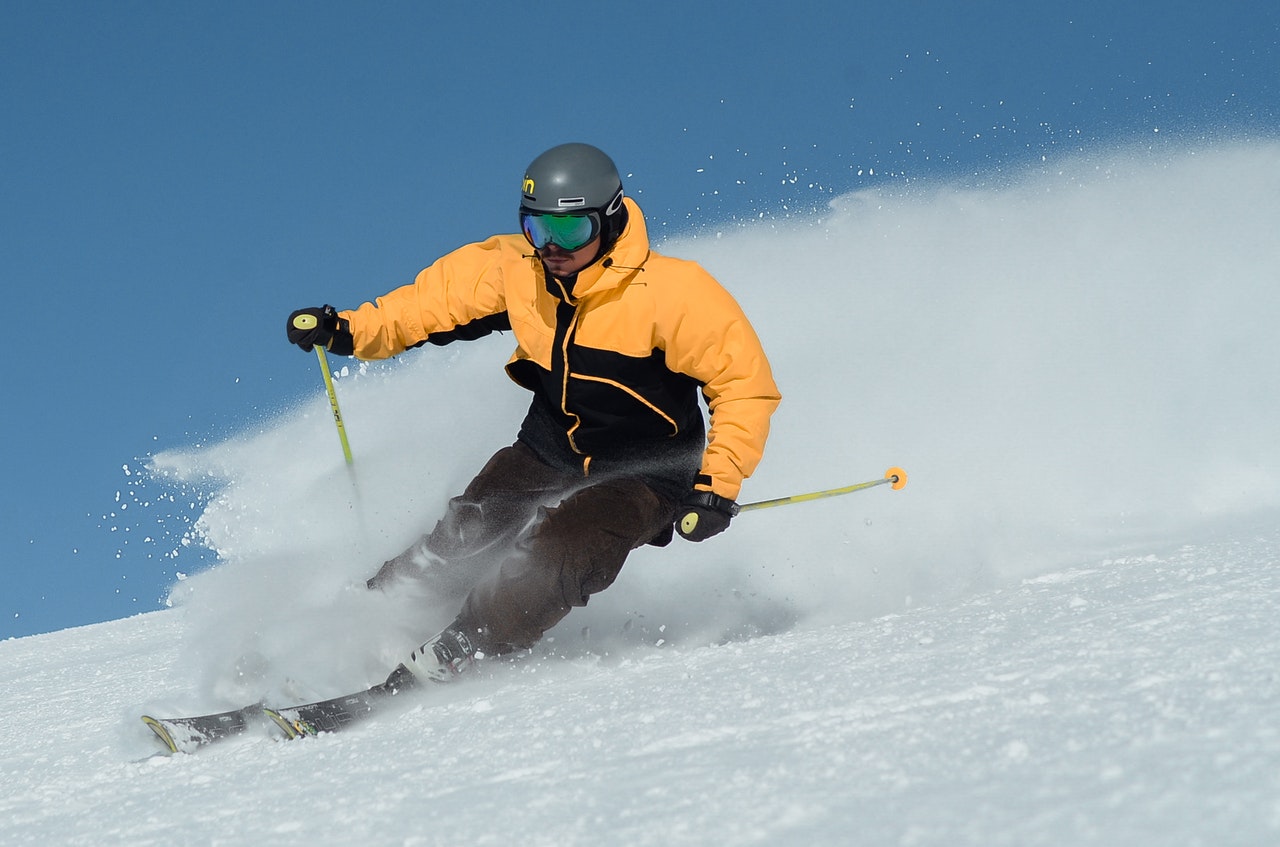Each winter British Columbia’s spectacular scenery and relatively mild weather attract tens of thousands of Canadian and American outdoor sport enthusiasts to the province. From accomplished downhill speedsters ready to tackle North America’s fourth highest vertical drop at Kicking Horse Mountain to families enjoying a back country snowshoeing or dog sledding weekend at Kimberley Alpine Resort, B.C.’s thirty resorts offer something for just about any winter sport lover.
Basic Precautions for Skiers and Snowboarders
There are common sense rules that all responsible downhill sport participants practice. Because skiing and snowboarding are both inherently somewhat hazardous and possible for only part of the year, it’s always advisable to do a quick review of these basics before heading out to the slopes for the first time.
Warm Up Gradually
Skiing and snowboarding place specific demands on your body, and chances are your muscles won’t adapt immediately. Even if you are in great physical condition, unless you’re an active competitor who conditions and builds muscle memory for winter sports year round, don’t tackle the most challenging trail your first time out. B.C. winter resorts have some of the longest seasons in the world, so there’s really no need to rush getting back into last season’s form.
Wear a Helmet
In addition to properly sized and adjusted skis, boots and bindings, a good quality helmet for each member of your group is a must. After the 2009 death of Natasha Richardson at Mont-Tremblant in Quebec and subsequent fatalities at Ontario, there were nationwide calls for mandatory helmet laws. The suggestion that government intervention is needed has had its critics, however, and to date only Nova Scotia has enacted such legislation. While few dispute the value of helmet use, many feel that regulation is unnecessary because helmet requirements will eventually be adopted by all Canadian resorts.
Take a Lesson
Even if you are well experienced, a short refresher lesson from an expert can speed up your return to peak season form.
Always Ski or Board With a Buddy
A sensible rule that applies to nearly every outdoor activity.
Know Your Limits
Be honest with yourself. It’s not cowardly to decline an attempt at an expert slope if you know in your heart that you’re not ready.
Know and Observe the Alpine Responsibility Code .
It’s really just a collection of principles of common sense and courtesy.
Ski Accident Lawsuits
With participants of all skill and experience levels on the slopes, ski and snowboarding accidents are inevitable. Some are the result of unexpected obstacles, icy patches or just plain bad luck. In other instances, however, an injury can result from another’s carelessness or poor judgment. Whether (and whom) one can successfully sue for damages after such an accident depends in large part on whether the event was within the range of foreseeable hazards associated with the activity. If so, the waiver to which you agree when purchasing your lift pass probably precludes suit against the resort owner or operator.
On the other hand, the resort may be responsible if your injury was caused by a fall caused by a defective lift. The manufacturer, seller or installer of the failed lift may also face a suit based on a product liability theory.
Also, a skier or boarder who is exhibiting dangerous behaviour, such as excessive speed, disregard of others’ presence or being under the obvious influence of alcohol or drugs may be held legally responsible if his or her conduct results in injury to another.
British Columbia Ski Accident Lawyers
If you believe you have been injured in as a result of the negligence of a ski resort operator or a fellow participant, the experienced personal injury team at Diamond and Diamond is ready to help. Call our 24/7 injury hotline at 1-800-567-HURT or visit our website to speak to someone now. We offer free consultations and case evaluations. Our team of personal injury lawyers represents clients throughout British Columbia.
